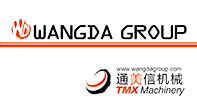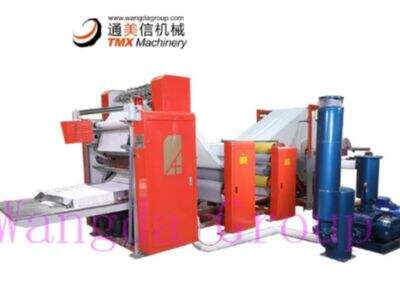Facial tissue is one of those daily necessities we all use in our lives. Tissue will be used for wiping out noses during sickness, wiping the face after eating and also used to make craft such as colorful tissue flowers. I know very little about it. Face tissue comes with the question — how do we produce it. As if by some magic, but laid down by a machine called a facial tissue machine. In this article, we will look at how this wonderful device works and how it contributes to the fabrication of the tissues we utilize on a daily basis.
Facial Tissue Manufacturing is
Facial tissue manufacturing, or making facial tissues. It begins with a roll of paper called a jumbo roll. The jumbo roll is really large and very heavy. The machine carefully unrolls it when it is ready. The paper is then leveled out, allowing it to be cut into smaller sheets. These tiny bits will transform into the facial tissues he utilizes every day — at home, school, and work. The production of these facial tissue machines is the responsibility of a high-profile company known as Wangda Industrial. They assist individuals globally in producing soft and functional tissues.
The Process of a Facial Tissue Machine
Facial tissue machines are unique and sophisticated machines that process several machine-related processes to manufacture tissues. It begins with the machine unrolling a jumbo roll of paper. This is where it all starts. The width limit: to be done on the paper you want to be rolled The paper gets canvas → paper in full — paper canvas → paper unrolled it → a few rollers → These rollers tightly press the paper together and provides with a special glue that helps the layers stick to one another. This glue is vital because it provides the tissue stability in use. Then comes the cutting machine. Then we put that long piece of paper in to this machine and it tears that roll into smaller equal sized pieces. In the end, these little bits are then folded and boxed up so that they can sit on the shelf for sale.
Why is Paper and Glue Important?
The Paper Used In Facial Tissues Machines Principally Matters It should be so soft that it will feel good against our skin. It should also be absorbent to soak the liquid, as in a runny nose. Also the paper has to be strong enough to be able to withstand usage, so the paper doesn’t rip. The type of glue which is used in these machines is also very critical. The glue needs to be a right balance — strong enough to hold the paper together, but not so strong that it rips the tissues apart during use. Finally, but not least, the cutter itself has to be very accurate. That means it has to trim the paper just right to get all the tissues uniform sizes. If they are of a different size, in a way it will be confusing while we use it.
Importance of Quality ControlAdjust this text with your own content
Quality control is an integral process in the production of facial tissues. All paper rolls, glue, or a finished tissue are inspected thoroughly. This checking process ensures that the components are manufactured the right way and to the correct specifications. It is crucial, since if a tissue is not properly made, it can potentially function poorly when needed. Quality control means a lot to Wangda Industrial. This assures that whatever facia tissues a consumer generates, they are of the best quality possible as every appliance appreciably is a fine device.
Ý tưởng và cải tiến mới
Wangda Industrial is always seeking for the betterment of their machines which is why they are always at attempting to bring innovation to the machinery world. They engage directly with their customers and utilize their feedback to identify areas of improvement for the machines. An interesting new concept was to recycle paper to create facial tissues. This is a huge positive as it does indeed save the environment by reducing the consumption of new paper. And also brings the price down for making the tissues which actually benefits everyone.

